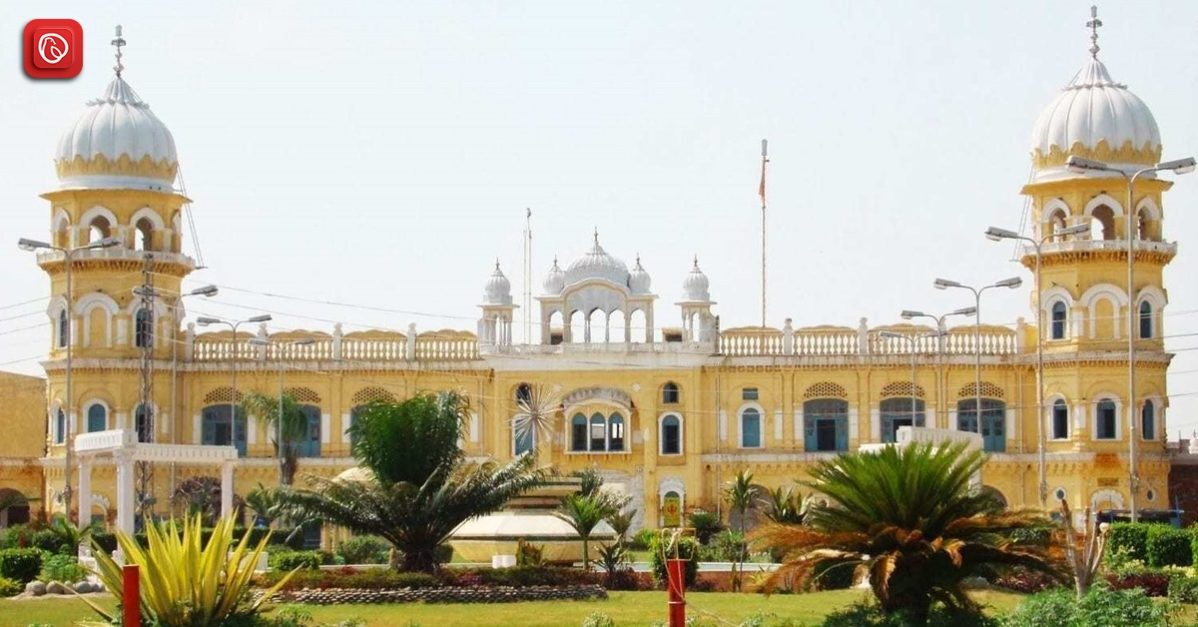There’s only one thing more flavourful than Pakistan’s cuisine: the country’s heritage. Home to a diverse range of religions and cultures, the state is a museum of historical treasures and landmarks. One such monument is Gurdwara Janam Asthan Nankana Sahib, the birthplace of the founder of Sikhism. Today, Graana.com will walk you through the dynamic history of this celebrated shrine and its significance in present-day Pakistan.
An Overview: Gurdwara Janam Asthan Nankana Sahib
The term Gurdwara Janam Asthan literally translates to “sacred birthplace”. The Gurdwara Janam Asthan Nankana Sahib is one of the holiest sites in Sikhism. This shrine signifies the birth site of Guru Nanak Dev Ji, the founder of Sikhism.
| Gurudwara Janam Asthan Nankana Sahib | |
| Significance | Birthsite of the founder of Sikhism, Guru Nanak Dev. |
| Religion | Sikhism |
| Location | Janam Asthan Nankana Sahib is 65 kms (44-48 miles) west from Lahore. |
| Town and Country | Nankana Sahib District, Punjab, Pakistan. |
| Architectural Style | Sikh Architecture |
| Construction Started | 1600 A.D. |
| Constructed Completed | 1819-20 A.D. |
| Restoration Work | 2020 |
The massive structure stands as a testament to the teachings of Guru Nanak. It also reflects the spirit of unity, equality, and devotion. Pilgrims from around the world visit this Gurdwara to pay homage and find spiritual solace.
History of Janam Asthan Nankana Sahib
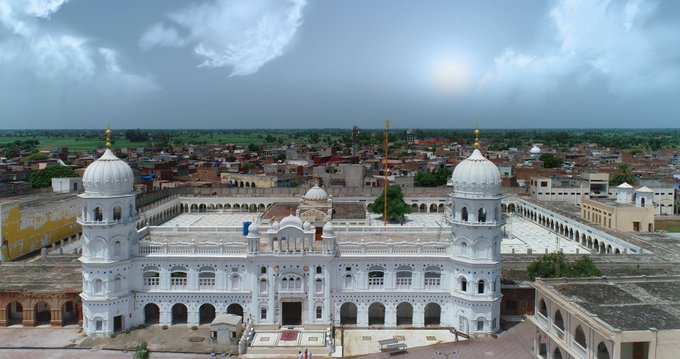
The budding domes of Gurdwara Janam Asthan first appeared in 1600 A.D. within the town of Nankana Sahib, then Rai Bhoi Di Talwandi. The construction of a humble memorial started under the rule of Maharaja Ranjit Singh during the later part of the 16th century.
However, with every generation of Guru Nanak Devji’s followers, the structure grew and expanded. The landmark, as we know it today, was completed between 1819 and 1820 and has been one of the top historical places in Pakistan ever since.
Conflicts
Despite its significance, the Gurdwara suffered at the hands of British colonists during the Raj. As the foreign forces tried regulating the religious sites in pre-partition India, tensions grew. A prominent conflict involving the hereditary custodians of the Gurdwara took place in the early 20th century.
The Massacre of 1921
The sturdy walls of Gudwaran Janam Asthan Nankana Sahib still bear the scars of the 1921 Massacre. This tragedy unfolded when 200 Sikhs, along with their leader, Lachhman Singh Dharowali, embraced martyrdom at the hands of British authorities and Mahants.
Resolution
The Nankana Sahib Massacre was a turning point in Sikh history. It sent ripples of protests and unrest within various regions where Sikhs demanded the liberation of their shrines from corrupt custodians.
Eventually, in 1925, a Shiromani Gurdwara Parbandhak Committee (SGPC) was formed under the Sikh Gurdwara Act. This committee was held responsible for the maintenance and integrity of these sacred places. Now known as the Pakistan Sikh Gurdwara Parbandhak Committee (PSGPC), the organisation is still working alongside the Pakistan government to ensure a better present for the Sikh minority in Pakistan.
Significant Features of Janam Asthan Nankana Sahib
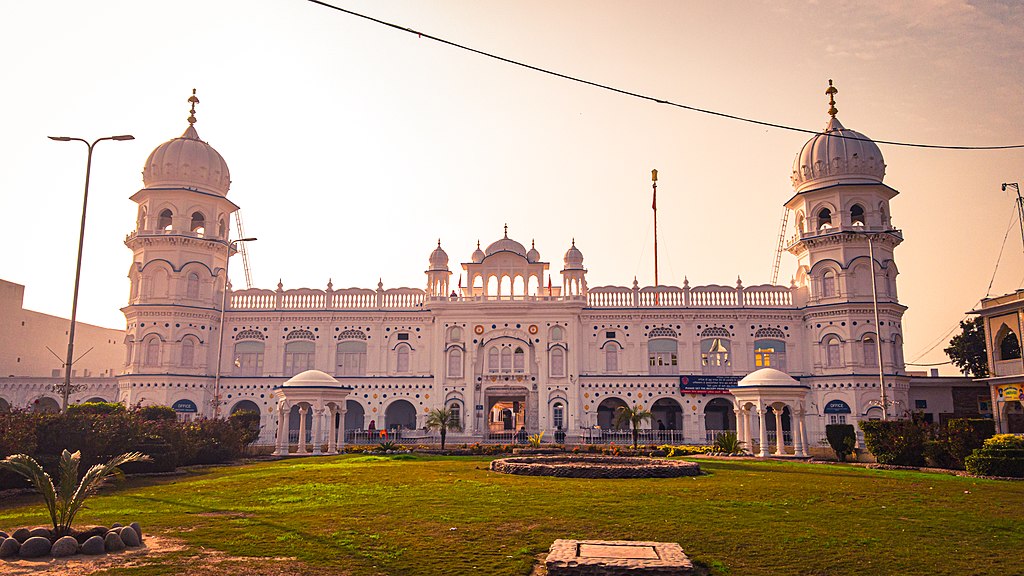
Whether you’re a devoted pilgrim or a curious tourist, no amount of words can replace the profound experience of standing within the sacred precinct of Gurdwara Janam Asthan Nankana Sahib. Yet, here’s an attempt to capture the unique architectural heritage of the opulent Sikh legacy.
The White Walls and Bud Domes
The white walls of Gurdwara Janam Asthan Nankana Sahib are an awe-inspiring sight. Stretching over 20,000 acres of land, they are the first things that greet your eyes as you approach this sacred place.
The brilliant walls and majestic domes not only capture one’s attention with their sheer grandness but also hold profound significance. These architectural elements symbolise purity and simplicity, the core principles of Sikhism. The white walls stand as a testament to the unwavering commitment to a pure heart and mind, while the domes, resembling the buds of spiritual awakening, represent enlightenment.
They remind visitors that within these walls, all are equal, and the pursuit of truth and spiritual growth is paramount. The white and gold palette reflects the radiant presence of the divine within, making Gurdwara Janam Asthan a place where the soul can soar and find solace in the heart of Sikh devotion.
The Great Gates
The massive gates of Janam Asthan, monumental and magnificent, invite all who approach. Four doors stand tall, whispering a profound message – that within these sacred walls, all are embraced, and each soul is welcomed with open arms. It’s a powerful symbol of inclusivity and the universal spirit of oneness that defines the essence of Sikhism, inviting all to enter and find solace in its warm embrace.
The Saro-var
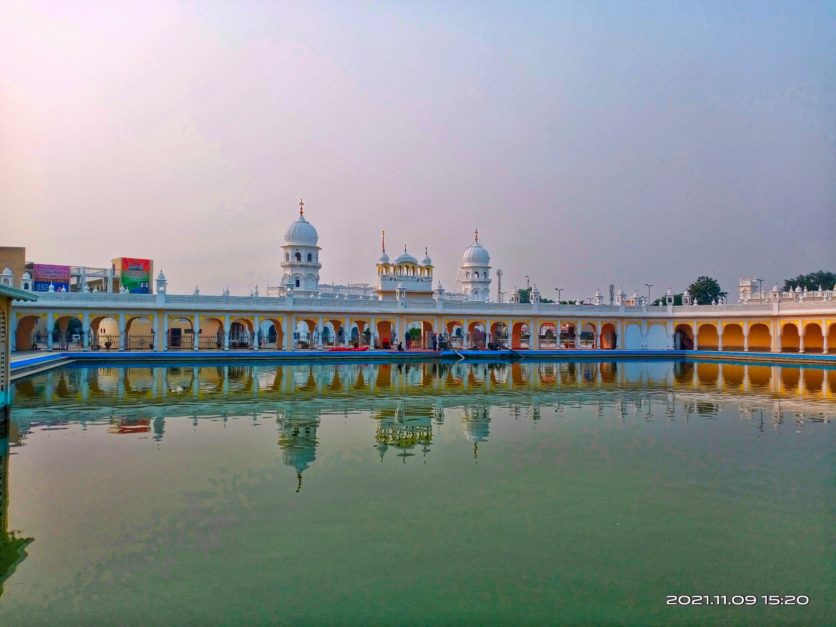
The pool within Gurdwara Nankana Sahib is a serene and sacred feature that holds deep spiritual significance. Known as the “Sarovar,” it is a symbol of purity and cleansing, both of the body and the soul.
Pilgrims visit this pool to perform ablutions, immersing themselves in its tranquil waters as a symbolic act of purifying their hearts and minds. The Sarovar also reflects the sky’s expanse, mirroring the boundless nature of Sikh spirituality. It is a place where devotees find peace, perform prayers, and seek spiritual solace, connecting with the eternal principles of Sikhism.
Palakis (Palanquins)
In Gurdwara Janam Asthan Nankana Sahib, there are two Palakis (palanquins) holding great value. Each of them represents a unique aspect of Sikh history and devotion.
Palaki for the Holy Book
The Palaki for the holy book, Guru Granth Sahib, is a symbol of utmost reverence. It serves as the focal point of the Gurdwara’s prayer hall, holding the sacred scripture that embodies the divine teachings of Sikhism.
This beautifully adorned Palaki stands as a testament to the central role of the Guru Granth Sahib in the lives of Sikhs. It is a place where Sikhs come to pay their respects, seek spiritual guidance, and find inspiration in the profound wisdom contained within its pages.
Palaki to Honour the Martyrs of 1921
Another Palaki within the Gurdwara is dedicated to honouring the memory of the martyrs of the 1921 Nankana Sahib Massacre. This poignant memorial stands as a solemn reminder of the sacrifices made by Sikh leaders during a turbulent period in history.
Often adorned in gold or ornate decorations, this Palaki pays tribute to the brave souls who gave their lives in the name of Sikh faith and freedom. It serves as a place for reflection and remembrance, ensuring that the courage and commitment of those who fought for their beliefs are never forgotten.
Both Palakis within Gurdwara Janam Asthan Nankana Sahib encapsulate the deep spirituality and historical essence that underpin Sikhism. They offer a space for devotion and reverence, as well as a powerful connection to the faith’s enduring values and history.
The Tree of Sacrifice
Within the sacred precincts of Gurdwara Janam Asthan Nankana Sahib, a great and ancient tree stands as a sentinel of history and sacrifice. This revered tree, often identified as a Bargad or Banyan tree, witnessed pivotal moments in Sikh history, particularly during the British colonial period in India.
It was beneath the branches of this tree that Sikh leader Lachhman Singh Dharowali was hanged during a time of conflict. He became the first martyr on this solemn ground, igniting a fierce struggle for the preservation of Sikh heritage and faith.
This great tree serves as a living monument, its branches extending like the arms of history itself, a tangible reminder of the enduring spirit and sacrifices made by Sikh leaders in their quest for religious freedom and justice.
Exquisite Frescoes of Faith
Walls and ceilings breathe with stories, vivid frescoes depicting the spiritual journey of Sikh Gurus and the eternal message of Guru Granth Sahib. Every stroke tells a tale.
Preservation of Essence
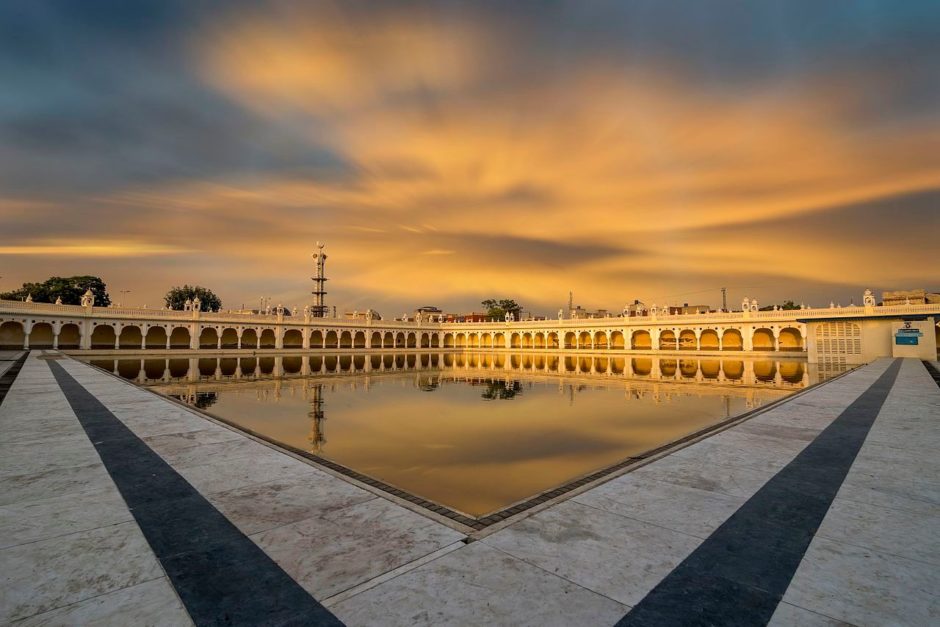
The Gurdwara is not only an honorary building to mark the birthplace of Guru Nanak but it preserves the essence of his teachings and his life. From the white marble, to warm chandeliers to crimson carpets, all signify peace and solace one way or another.
The Birth-room
The birth-room of Guru Nanak within Gurdwara Janam Asthan Nankana Sahib is a sanctuary of serenity and reverence. This hallowed chamber is a window into history, where the founder of Sikhism first opened his eyes to the world.
The room is adorned with timeless beauty, featuring pristine white marble, intricate arches of Sikh architecture, and a resplendent chandelier casting a soft, warm glow. At the heart of this room is an elevated platform, the Palaki Sahib, cradles the revered holy book.
The book, held in the highest esteem, enjoys a climate-controlled chamber, protected from the elements. Two caretakers, ever watchful, ensure its sanctity. This book, a repository of revelations from the Divine, holds a place of paramount importance in Sikh faith.
For Sikhs, there’s no worship of idols, no bowing to any tomb; their reverence lies solely with the word of God. There are two caretakers present within this sacred chamber at all times to tend to the room and its contents.
The architecture of Gurdwara Janam Asthan Nankana Sahib is more than brick and mortar; it is a living testament to the unwavering devotion, sacrifice, and eternal spirit of Sikhism.
List of Festivals Celebrated At Janam Asthan
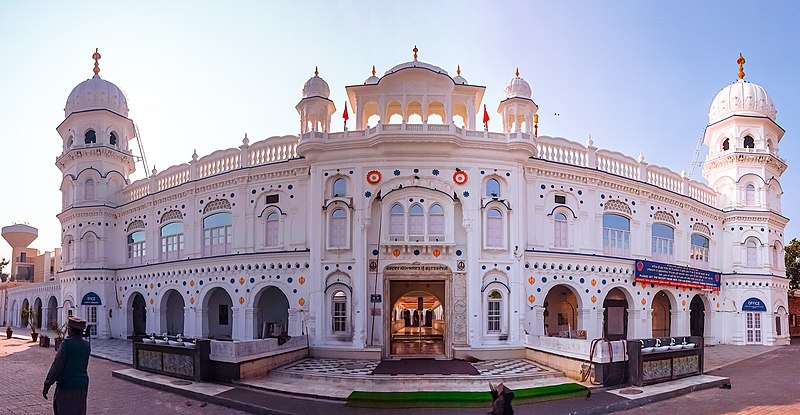
Gurdwara Janam Asthan Nankana Sahib celebrates various Sikh festivals and important religious events throughout the year. Some of the festivals observed within the Gurdwara include:
- Gurpurab: This is the celebration of the birth anniversaries of the ten Sikh Gurus, with the most significant being Guru Nanak Dev Ji’s Gurpurab.
- Vaisakhi: Celebrated on April 13 or 14, Vaisakhi marks the creation of the Khalsa and is an important event in Sikh history.
- Gurta Gaddi Diwas: Commemorating the day when Guru Granth Sahib was declared as the eternal Guru of the Sikhs.
- Diwali: The festival of lights holds a special place in Sikhism as it signifies the release of Guru Hargobind Ji from imprisonment.
- Holla Mohalla: This festival is celebrated with martial arts performances, processions, and various activities that showcase the warrior spirit of Sikhism.
- Guru Hargobind Ji’s Birthday: The birth anniversary of Guru Hargobind Ji is celebrated with special prayers and events.
- Guru Tegh Bahadur Ji’s Martyrdom Day: This day commemorates the martyrdom of Guru Tegh Bahadur Ji.
These festivals are significant occasions for the Sikh community and are celebrated with devotion and enthusiasm at Gurdwara Janam Asthan Nankana Sahib, as they honour the teachings and history of Sikh Gurus.
Visiting Gurdwara Janam Asthan
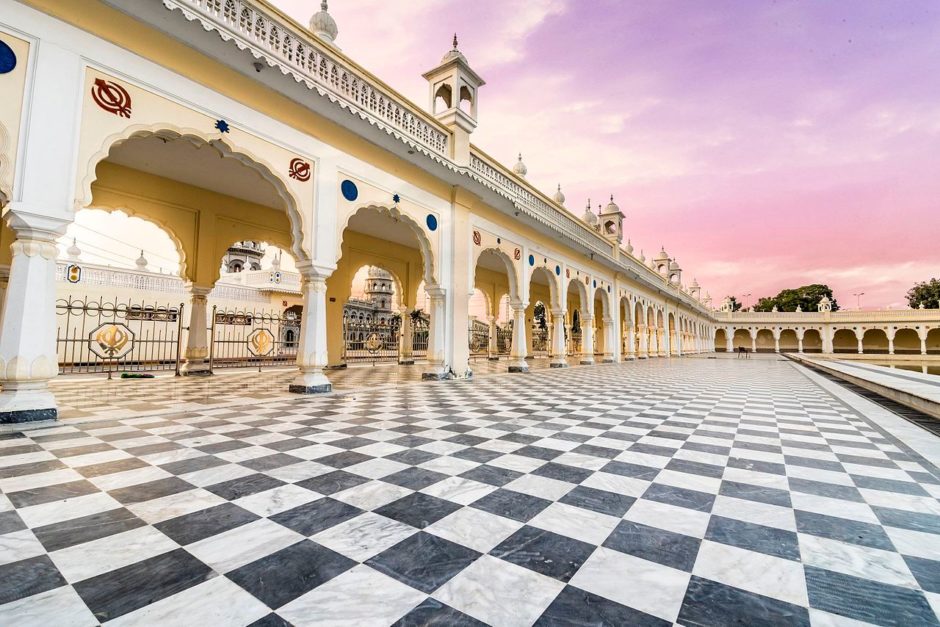
While visiting the Gurdwara as a tourist, stay mindful of these codes.
Dress Code
A general rule of thumb while visiting a holy place is to dress appropriately. To honour the sacred space, visitors must dress modestly. Covering one’s head as a sign of respect is a prominent practice among the Sikhs. Thus, head covers or “Romals” are provided and should be worn by all, including men, women, and children.
Footwear
Shoes are not allowed inside the Gurdwara premises. Visitors must remove their shoes and place them in designated areas or racks. Socks or stockings should be worn.
Cleanliness
Before entering the prayer hall or the sanctum, it is customary for visitors to purify themselves by washing their hands and feet in designated areas. This practice not only symbolises personal cleanliness but also respects the sanctity of the Gurdwara.
Upon arrival, visitors are encouraged to wash their feet in a designated puddle encircling the Gurdwara, much like a protective moat. This act is a humble gesture of reverence. Subsequently, washing their hands further signifies respect and purity.
Another compelling reason to uphold this tradition is the understanding that many individuals seek refuge within the sacred walls of a Gurdwara. Just as one would maintain cleanliness when visiting as a guest in someone’s home, this practice ensures a clean and welcoming environment for all who come seeking solace and spiritual connection.
Non-Violence and Respect
Visitors are expected to refrain from engaging in any form of violence, including verbal arguments or disputes. Respect for the place and fellow visitors is of utmost importance.
Specific Entry Times
The Gurdwara is typically open from 8 am to 5 pm. After 5 pm, it is reserved for Sikh prayer and may not be open to visitors. It is also important to have your ID card on you in order to get past the security at this holy place.
Permission for Filming and Cameras
Visitors should obtain permission for any filming or camera usage within the premises.
Silence and Devotion
Maintaining a quiet and contemplative atmosphere is crucial. Talking loudly or creating unnecessary noise should be avoided. Visitors should approach their visit with a sense of devotion and humility.
Respect for the Guru Granth Sahib
When the Guru Granth Sahib is being read or recited, all visitors should stand in silence as a sign of respect.
Equality
In the Gurdwara, all individuals are considered equal, and discrimination based on caste, class, or gender is strictly prohibited.
Langar (Community Kitchen)
Visitors are encouraged to partake in the langar. Everyone is welcome, and it’s customary to sit together on the floor as equals and partake in the communal meal.
Donations and Offerings
While not mandatory, visitors are welcome to make voluntary donations to support the Gurdwara’s upkeep and charitable activities. Offerings can be made in the donation boxes provided.
These rules are in place to ensure that visitors show respect for the religious and cultural practices of Sikhism and to help maintain the sanctity of Gurdwara Janam Asthan Nankana Sahib.
Major Pilgrimages At Janam Asthan Nankana Sahib
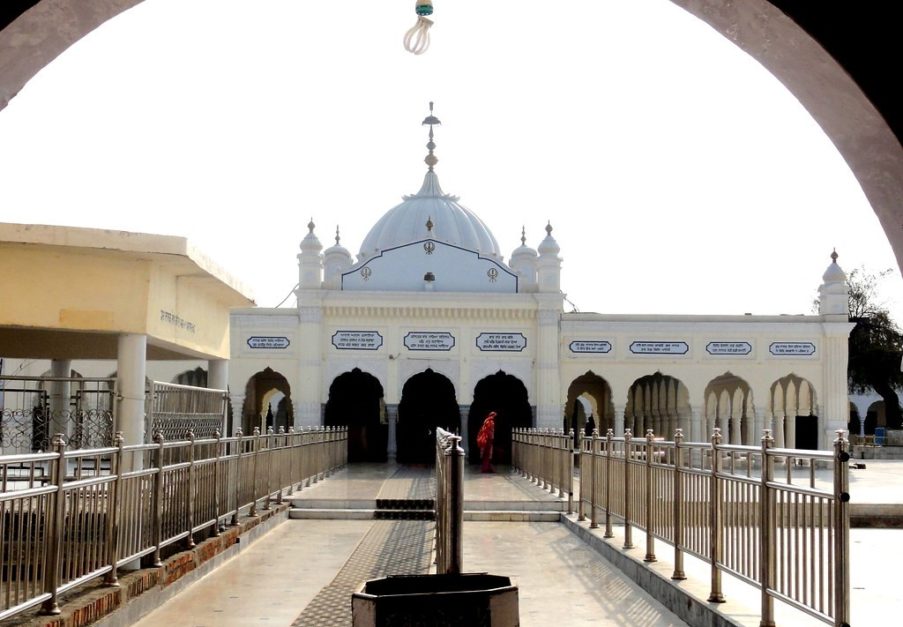
As a sacred landmark, Janam Asthan welcomes thousands of Sikhs each year with open arms. Here is a list of the top highlighted pilgrimages of all time.
The Pilgrimage of 2010
In 2010, pilgrims converged on Gurdwara Janam Asthan Nankana Sahib to commemorate the teachings and legacy of Guru Nanak Dev Ji. This celebration was a time of reflection, a collective homage to the founder of Sikhism. Pilgrims engaged in prayers, ceremonies, and gatherings that echoed the timeless wisdom of Guru Nanak, embracing the essence of unity, equality, and devotion.
The 543rd Birthday of Guru Nanak Dev Ji 2011
Around the time Muslims were celebrating Eid-ul-Azha, nearly 6,000 Sikhs made their way to Nankana Sahib to celebrate “Gurpurb” the 543rd birthday anniversary of Guru Nanak Dev in November.
Pilgrimages in 2015
Throughout the years, 2015 witnessed a flow of pilgrims making their way to Gurdwara Janam Asthan Nankana Sahib. These journeys were not just physical travels; they were connections to Sikh heritage and a rekindling of spiritual roots. Pilgrims immersed themselves in the history and teachings of Sikhism, forging a deeper bond with their faith.
Baisakhi Celebrations in 2016: A Gathering of Faithful Souls
In 2016, around 2000 Sikh yatris or pilgrims embarked on a significant journey to Pakistan via the Wagah Railway Station. Their purpose was to celebrate Baisakhi, a festival that holds immense importance in Sikhism.
This annual event marks the harvest festival and, more significantly, the formation of the Khalsa Panth. The pilgrims came to Gurdwara Janam Asthan Nankana Sahib to partake in the festivities of “Khalsa Janam Din,” honouring the birth of the Khalsa. It was a vibrant and joyous occasion, a collective expression of devotion and unity.
The Kartarpur Corridor in 2019: A Path of Peace and Pilgrimage
In 2019, a historic moment unfolded in the form of the Kartarpur Corridor. This corridor opened up a direct route from India to Gurdwara Janam Asthan Nankana Sahib, allowing pilgrims to visit this sacred site with ease.
The corridor not only facilitated physical access but also symbolised the spirit of peace and unity. Pilgrims flocked to this passage, fulfilling a long-cherished dream of paying homage to the birthplace of Guru Nanak Dev Ji.
Each of these pilgrimages stands as a testament to the unwavering faith and devotion of Sikhs. They not only commemorate significant events in Sikh history but also provide an opportunity for the faithful to connect with their spiritual heritage. Gurdwara Janam Asthan Nankana Sahib continues to be a beacon of light, drawing pilgrims on a timeless journey of the soul.
Modern-day Nankana Sahib City
With all its cultural significance, Nankana Sahib is a cherished destination for Sikhs and admirers of history. However, despite its historical value, Nankana Sahib requires consistent attention and care from the Pakistani Government to preserve and promote its sanctity.
In this section lets explore the present-day Nankana Sahib, shedding light on its current state and the essential details that every traveler and enthusiast should know.
| Major Facts: City Nankan Sahib | |
| Founded (Modern Day) | May 2005 Provincial Government, Pakistan |
| Old Name | Rai Bhoi Ki Talvandi |
| Area | 2,228 acres |
| Population | 79,216 |
| Historical Places | Gurdwara Janam Asthan, Gurdwara Bal Leela, The Gurdwara Mal Ji Sahib, Gurdwara Kiara Sahib, The Gurdwara Tambu Sahib |
| Significance | Holy, Sikhism |
| Infrastructure | Motorway M3, Railway, Hospitals, Hotels |
| Tourism Status | Healthy |
| Neighbouring Cities | Lahore, Faisalabad |
The Sikh Community
The Sikh community in the area comprises approximately 1,200 individuals residing in 250 Sikh-owned homes. As a closely-knit community, Sikhs express their gratitude to the Pakistani Government for prioritizing their well-being and fostering an environment where minorities are welcomed and made to feel at home. Most Pakistanis share a respectable ambition in supporting and integrating minority communities, embodying the spirit of inclusivity and harmony.
New Developments In Nankana Sahib
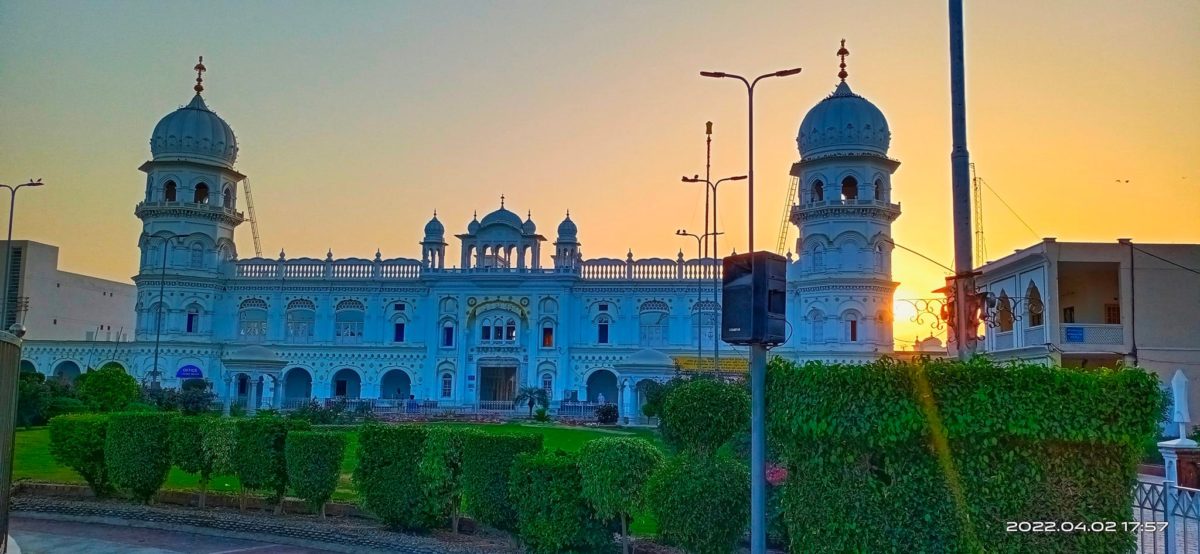
In the present day, new Gurdwaras are emerging as symbols of devotion and cultural preservation. One such example is Gurdwara Bal Leela, established in 2008 as part of a meticulous restoration project to revive the essence of an old Gurdwara.
With a construction budget of roughly 8-9 crores, this effort sought to honor the ground where Guru Nanak Dev Ji once played, ensuring his legacy thrives through the ages. In a significant development, in January 2023, the Lahore Development Authority (LDA) unveiled plans for housing schemes in Nankana Sahib, signifying a commitment to furthering the town’s growth and vitality.
Conclusion
Gurdwara Janam Asthan Nankana Sahib is one of the enhancers of Pakistan’s fascinating cultural and historical heritage. These sacred walls have not only witnessed the devotion of countless pilgrims but have also offered solace, meaning, and refuge to those who seek them.
Pakistan’s commitment to preserving and maintaining this invaluable site is evident as the government and developmental authorities diligently work to ensure its sanctity endures. With ambitious plans in place, not only for Gurdwara Janam Asthan Nankana Sahib but for other Gurdwaras as well, the country extends a warm embrace to its Sikh community.
Frequently Asked Questions
Here are some of the commonly asked questions about Gurdwara Janam Asthan Nankana Sahib.
What makes Nankana Sahib so important?
Nankana Sahib is of paramount importance to Sikhs as it is the birthplace of Guru Nanak Dev Ji, the founder of Sikhism. The town and Gurdwara Janam Asthan Nankana Sahib are revered as a spiritual and historical site, drawing pilgrims from around the world who come to pay homage to Guru Nanak and seek spiritual solace.
Why is Gurdwara Janam Asthan Nankana Sahib so famous?
Gurdwara Janam Asthan Nankana Sahib is famous because it marks the exact spot where Guru Nanak Dev Ji was born in 1469. It is one of the most sacred shrines in Sikhism, preserving the legacy of Guru Nanak and serving as a site for pilgrims to celebrate his teachings and life.
Who made Nankana Sahib?
Nankana Sahib was not “made” by a single individual. It is a historic town in Pakistan that gained significance due to its association with Guru Nanak Dev Ji’s birthplace. Over time, Gurdwaras were established to honour this sacred location.
Who was killed in Nankana Sahib?
Nankana Sahib is known for the Nankana Massacre of 1921. During this tragic event, Sikh pilgrims were attacked, and many lost their lives in a violent clash with the Mahants who controlled the Gurdwara. The massacre left a deep scar in Sikh history.
What’s the connection between Nankana Sahib and Akali Dal Movement?
The association of Nankana Sahib and the Akali Dal Movement was pivotal for Sikh activism during the British Raj. The Akali Dal played a significant role in advocating for Sikh rights and the management of Gurdwaras, including Gurdwara Janam Asthan Nankana Sahib.
What was the Nankana Massacre?
The Nankana Massacre, which occurred in 1921, was a violent clash at Gurdwara Janam Asthan Nankana Sahib between Sikh pilgrims and the custodians of the Gurdwara. This tragic event resulted in the loss of many lives and is remembered as a dark chapter in Sikh history.
Who is the owner of Nankana Sahib?
Gurdwara Janam Asthan Nankana Sahib is managed and maintained by the Evacuee Trust Property Board (ETPB) of Pakistan. It serves as a place of worship for Sikhs and is open to visitors of all backgrounds.
Who was to maintain Nankana Sahib?
In the past, the management and maintenance of Gurdwara Janam Asthan Nankana Sahib were often contentious issues. Historically, the Mahants were in charge, but after the Akali Dal Movement the administration shifted to various entities. These included the Shiromani Gurdwara Parbandhak Committee (SGPC) and, later, the Evacuee Trust Property Board (ETPB) in Pakistan.
If you enjoyed this blog, head on to further reads at Graana blog.
